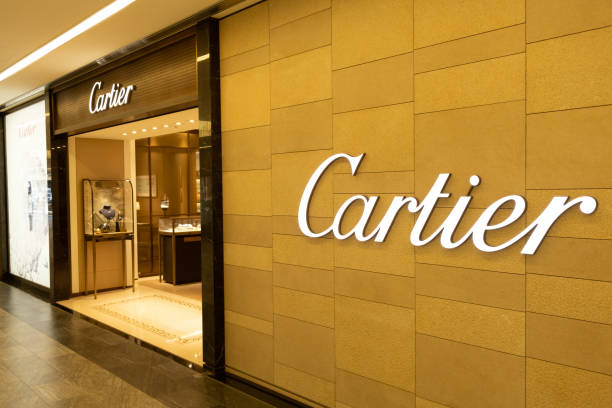Fashion brands are more than just labels on clothes; they represent a combination of creativity, innovation, and cultural influence. A fashion brand is a company or label that designs, manufactures, and markets clothing, accessories, and sometimes even fragrances and cosmetics. It’s an identity that resonates with its target audience through design, quality, and lifestyle messaging. Fashion brands have a profound impact on how people perceive themselves and how they want to be perceived by others. This article explores the significance of fashion brands, their role in the industry, and how they influence the global fashion landscape.
The Evolution of Fashion Brands
The concept of fashion branding began in the late 19th and early 20th centuries when designers like Coco Chanel and Christian Dior revolutionized the industry. They transitioned from simple garment makers to creators of luxury items that defined class and status. As the world became more interconnected through globalization, fashion brand began to emerge as global symbols of lifestyle, craftsmanship, and aspiration.
Over time, fashion brand evolved from being a source of clothing to being associated with a broader lifestyle. Luxury fashion brands like Louis Vuitton, Gucci, and Prada have become symbols of prestige, with their iconic logos and designs becoming synonymous with wealth and exclusivity. Meanwhile, more accessible brands like H&M, Zara, and Uniqlo have capitalized on fashion trends to create affordable yet stylish clothing, making fashion accessible to a broader audience.
Categories of Fashion Brands
Fashion brands can be broadly categorized into different types, each catering to a specific audience and market. These categories help define the brand’s identity, pricing, and target demographic.
Luxury Fashion Brands: These brand focus on high-quality materials, craftsmanship, and exclusivity. Their products are often expensive and target affluent customers who seek status and luxury. Examples of luxury fashion brands include Chanel, Hermes, and Versace.
Premium Fashion Brands: These brand sit between luxury and mass-market brand. While still offering quality products, they are more affordable than high-end luxury brands. Examples include Coach, Ralph Lauren, and Michael Kors.
Fast Fashion Brands: Fast fashion brand are known for quickly translating the latest trends into affordable clothing. They have streamlined production processes and offer mass-market designs that are trendy but often lack long-term durability. Popular fast fashion brands include Zara, H&M, and Forever 21.
Sustainable and Ethical Fashion Brands: With increasing awareness about environmental and social issues, many fashion brand have pivoted to sustainability. These brands prioritize ethical manufacturing practices, use eco-friendly materials, and often support fair labor practices. Brand like Patagonia, Stella McCartney, and Reformation are examples of fashion brand that focus on sustainability.
Streetwear Brands: Streetwear is a fashion movement rooted in urban culture, and it often draws on influences from skateboarding, hip-hop, and graffiti art. Streetwear brand like Supreme, Off-White, and Bape have become a global phenomenon, blending casual, athletic wear with high fashion.
The Influence of Fashion Brands on Consumer Behavior
Fashion brands influence consumer behavior by creating an emotional connection with their customers. Brands often employ marketing strategies that make their products seem aspirational, desirable, and a part of an elite group. The allure of owning a piece from a prestigious brand is powerful and taps into the desire for status, style, and exclusivity.
One of the ways fashion brand influence consumers is through celebrity endorsements and collaborations. Celebrities, influencers, and designers have become the face of major fashion brands, further legitimizing their appeal and increasing their desirability. For instance, Rihanna’s collaboration with Puma brought streetwear into the mainstream, while Kanye West’s partnership with Adidas resulted in the globally successful Yeezy line.
In addition, fashion brand use storytelling to create a sense of belonging. By aligning with a particular lifestyle or value, they can foster strong brand loyalty. For example, Nike isn’t just a sportswear brand—it represents athleticism, perseverance, and achievement. The tagline “Just Do It” captures the essence of their brand philosophy and resonates with millions of customers.
The Role of Technology in Fashion Branding
Technology has played a significant role in the development of modern fashion brand. Social media platforms like Instagram, Facebook, and TikTok have allowed brands to engage with consumers directly and showcase their designs in innovative ways. Social media influencers and bloggers help brands reach new audiences by promoting their products to their followers.
Furthermore, e-commerce has transformed the way fashion brand sell their products. Online stores allow brands to reach global customers without the need for physical retail spaces. This has also led to a shift in how consumers shop, with online reviews, user-generated content, and influencer marketing driving purchasing decisions.
Technology also plays a role in sustainable fashion, with brands adopting technologies that reduce waste and enhance product quality. Innovations like 3D printing, sustainable fabrics, and digital fashion design are shaping the future of the industry.
The Power of Brand Identity
A fashion brand’s identity is built on its values, vision, and the emotions it evokes in its customers. The brand identity includes not just the logo and design but also the message it conveys about quality, craftsmanship, and sustainability. Iconic fashion brands have a strong visual identity that customers can instantly recognize, which helps foster brand loyalty.
For example, the minimalist designs of Calvin Klein, the edgy style of Alexander McQueen, and the classic sophistication of Burberry each convey a unique brand identity. This identity influences how customers perceive the brand and its products. A well-defined brand identity can create a sense of community among customers who share similar values and aspirations.
The Future of Fashion Brands
As the fashion industry continues to evolve, fashion brand must adapt to changing consumer behaviors and societal trends. Sustainability, inclusivity, and digital innovation are shaping the future of fashion branding. Consumers are becoming more conscientious about the environmental impact of their purchases and are gravitating towards brands that align with their values.
Furthermore, the rise of virtual fashion and digital clothing is changing the way brand interact with consumers. Virtual fashion shows, digital-only collections, and even NFTs (non-fungible tokens) are pushing the boundaries of how fashion brands engage with their audiences.
Conclusion
Fashion brands are not just about selling clothes; they are about creating an experience, a lifestyle, and an identity. From luxury to fast fashion, sustainable brands to streetwear, the diversity of fashion brand reflects the dynamic and ever-changing nature of the fashion industry. These brands influence consumer behavior, shape culture, and will continue to evolve with technological advancements and shifting societal values. Ultimately, fashion brand are more than just products—they are a reflection of the world we live in and how we choose to express ourselves through style.





